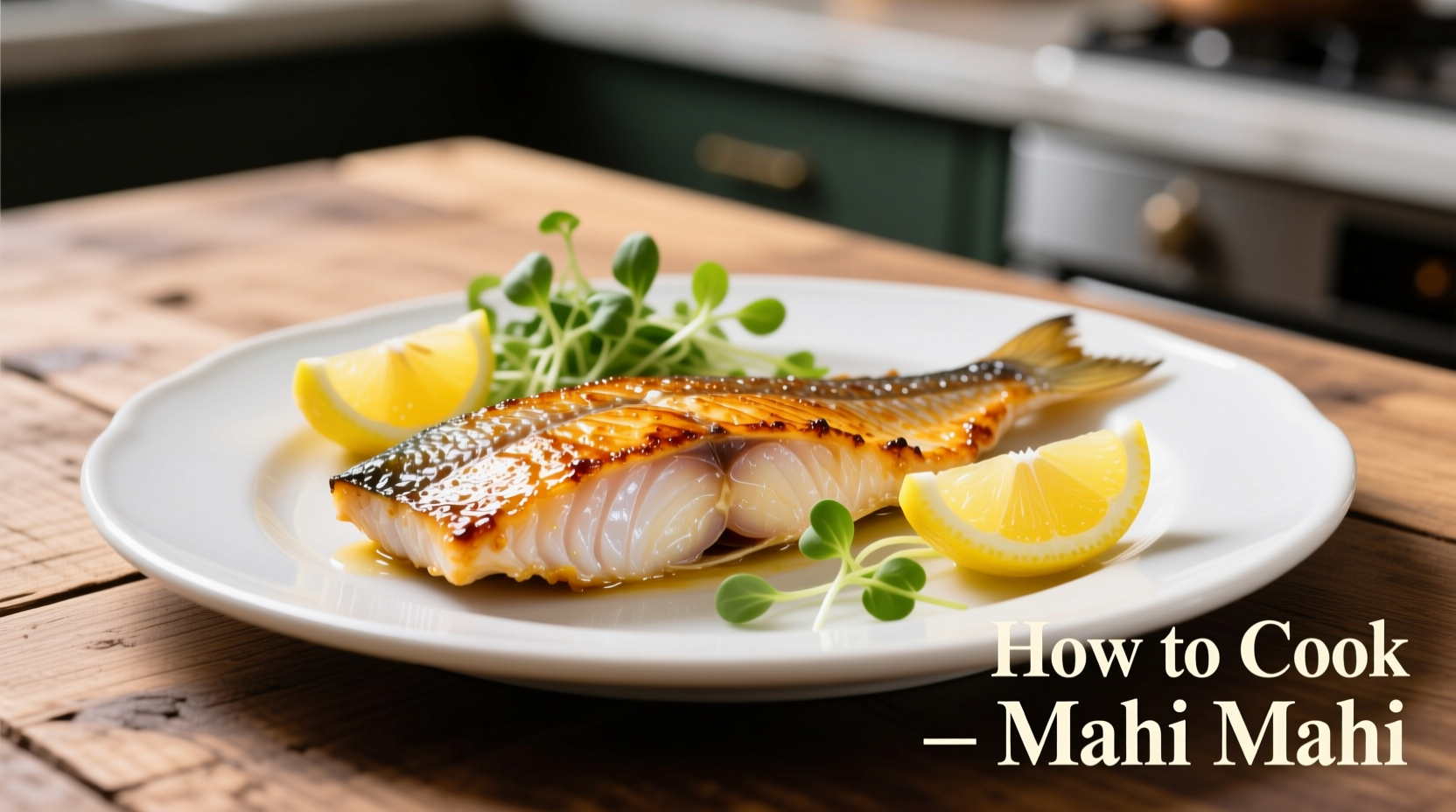Discover how to transform your mahi mahi from good to restaurant-quality with these chef-tested techniques. Whether you're working with fresh or frozen fillets, this guide delivers precise timing, temperature control, and flavor pairing strategies that prevent the #1 cooking error: dry, overcooked fish. You'll learn why mahi mahi's unique texture demands different handling than other seafood and how to achieve that perfect balance of crispy exterior and tender interior every time.
Why Mahi Mahi Requires Special Cooking Attention
Mahi mahi (also called dolphinfish) has a firm, steak-like texture that sets it apart from flakier white fish. Its lean composition means it cooks quickly but can easily become dry if mishandled. Unlike salmon or mackerel, mahi mahi contains minimal fat, making precise temperature control essential. The FDA recommends cooking fish to 145°F, but for delicate fish like mahi mahi, culinary professionals often pull it at 135-140°F since residual heat will continue cooking the fish after removal from heat source.
| Cooking Method | Recommended Temp | Cooking Time | Best For |
|---|---|---|---|
| Pan-searing | 400-450°F | 3-4 min/side | Thin fillets, quick weeknight meals |
| Grilling | Medium-high heat | 4-5 min/side | Thicker cuts, smoky flavor |
| Baking | 375-400°F | 12-15 min | Marinated fish, hands-off cooking |
Essential Preparation Steps Before Cooking
Proper preparation makes the difference between fish that sticks to the pan and develops a beautiful crust. First, ensure your fillets have been properly thawed if frozen - the USDA Food Safety and Inspection Service recommends refrigerator thawing for 24 hours rather than quick-thaw methods that compromise texture. Next, pat the fish completely dry with paper towels; moisture is the enemy of proper searing. For best results, let the fish sit at room temperature for 15-20 minutes before cooking to ensure even cooking. Season just before cooking, as salt draws out moisture when applied too early.

Mastering the Pan-Seared Technique (Most Reliable Method)
For consistently perfect results, pan-searing works best for most home kitchens. Heat a heavy skillet (cast iron or stainless steel) over medium-high heat until a drop of water sizzles immediately. Add high-smoke point oil like avocado or grapeseed oil - about 1 tablespoon. When the oil shimmers but isn't smoking, carefully place the fish in the pan, presentation side down. Resist the urge to move it for the first 2-3 minutes to allow proper crust development. Flip only once when the fish releases easily from the pan. Cook an additional 2-3 minutes until the internal temperature reaches 135-140°F. The National Oceanic and Atmospheric Administration confirms that properly handled mahi mahi is safe to consume at this temperature range due to its low risk of parasites compared to other fish species.
Grilling Mahi Mahi Without Sticking or Flaking
Grilling adds wonderful smoky notes but requires specific techniques. Preheat your grill to medium-high (around 400°F) and clean the grates thoroughly. Oil the grates using tongs and a folded paper towel dipped in oil - never spray oil on a hot grill. For delicate fish, consider using a grill basket or placing the fish on a cedar plank. Position the fish at a 45-degree angle to the grates for attractive sear marks. Cook for 4-5 minutes without moving, then rotate 90 degrees (for crosshatch marks) and cook 1-2 minutes more before flipping. Complete cooking on the second side until the fish flakes easily with a fork but remains moist inside.
Baking Mahi Mahi While Maintaining Moisture
While baking is less ideal for developing crust, it works well for thicker cuts or when marinating. Preheat oven to 375-400°F. Place fish in a lightly oiled baking dish. For added moisture, top with sliced citrus or tomatoes, or wrap in parchment paper (en papillote). Bake for 12-15 minutes until the fish reaches 135-140°F internally. The American Heart Association recommends baking as a heart-healthy preparation method that preserves omega-3 fatty acids better than high-heat methods, making it ideal when serving for health-conscious meals.
Flavor Pairings That Complement Mahi Mahi Perfectly
Mahi mahi's mild, slightly sweet flavor pairs beautifully with bright, acidic elements. Citrus-based marinades (lemon, lime, or orange) enhance without overpowering. Fresh herbs like cilantro, parsley, or dill add complexity. For tropical flair, try mango salsa or pineapple relish. When seasoning, remember that less is more - a simple combination of salt, pepper, and citrus often showcases the fish's natural flavor best. The Monterey Bay Aquarium's Seafood Watch program recommends choosing sustainably caught mahi mahi to support healthy ocean ecosystems while enjoying this delicious fish.
Troubleshooting Common Mahi Mahi Cooking Problems
Fish sticks to pan: Ensure proper preheating and that the fish is completely dry before cooking. Wait until it releases naturally before attempting to flip.
Dry, tough texture: This indicates overcooking. Use an instant-read thermometer and remove fish at 135°F - it will continue cooking off-heat.
Uneven cooking: Let fish come to room temperature before cooking and ensure consistent thickness by butterflying thicker portions.
Lack of flavor development: Don't overcrowd the pan, which causes steaming instead of searing. Cook in batches if necessary.
Storing and Reheating Leftovers Properly
Store cooked mahi mahi in an airtight container in the refrigerator for up to 2 days. When reheating, avoid the microwave which makes fish rubbery. Instead, gently warm in a covered skillet over low heat with a splash of broth or lemon juice to restore moisture. For best results, flake leftovers into fish tacos or salads where texture changes are less noticeable.











 浙公网安备
33010002000092号
浙公网安备
33010002000092号 浙B2-20120091-4
浙B2-20120091-4